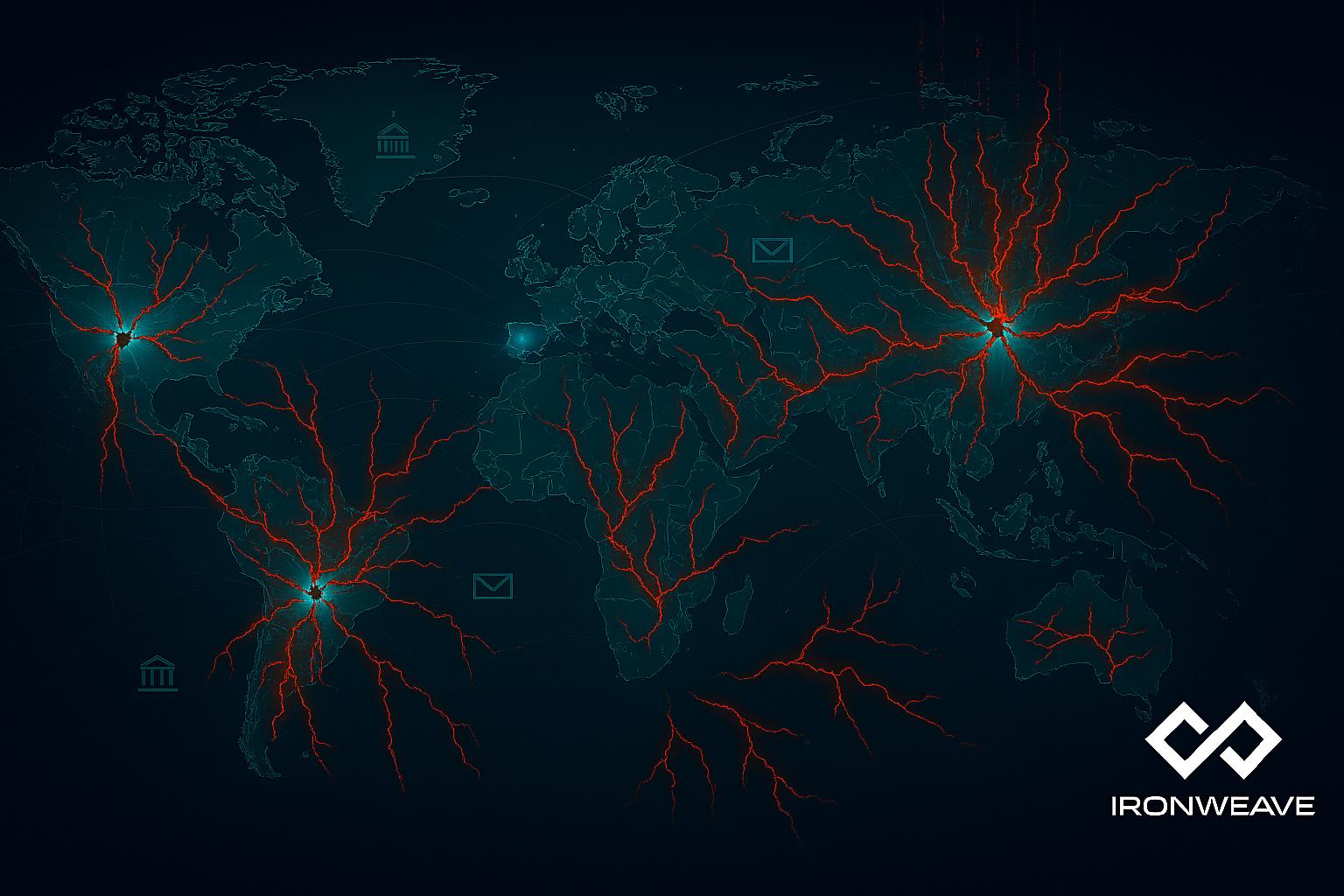Cybersecurity Today Isn’t Secure. IronWeave: Security Today and Tomorrow

The Salt Typhoon campaign was no ordinary hack - it was a years-long, full-scale cyber siege campaign that infiltrated the backbone of global telecom networks across 80 countries.
Let that sink in - 80 countries.
U.S. Senator Mark Warner, Chair of the Senate Intelligence Committee, has called this, “the most serious telecom hack in our nation’s history,” We all need to pay attention.
Orchestrated by Chinese state-backed actors, it grants them access to the private communications of governments, businesses, and even world leaders. This wasn’t just data theft. It was and is sustained surveillance, enabling hostile powers to quietly monitor sensitive conversations, map critical infrastructure, and compromise trust at the highest levels. For you and me, it means the very networks carrying our calls, texts, and data - over networks we assume are safe - are being used as listening posts. This is an urgent reminder that our current system of centralized data storage and management puts us all at risk.
How much more proof do we need that our current infrastructure can no longer protect national security, commerce, or personal privacy?
The Root Cause: A Broken Model
Did the Salt Typhoon campaign succeed because of a single vulnerability or neglected software update? No, it succeeded because centralized telecom networks and data architectures are structurally indefensible.
Senator Maria Cantwell, Senate Commerce ranking member, underscored the scale of the challenge: “Current and former government experts continue to indicate that Salt Typhoon may remain active in U.S. networks… Networks would likely need a forensic analysis of tens of thousands of endpoints to identify all potential compromises.”
This is the heart of the problem: centralized networks create massive single points of failure. Once infiltrated, attackers move laterally and scale their breach exponentially. Every dollar spent on monitoring and patching these systems yields diminishing returns, because the architecture itself is the weakness.
The Paradigm Shift: Accountability and Architecture
Despite the scope of the crisis, political leaders admit there is no clear fix within the existing model. Senator Rick Scott put it bluntly: “There’s no accountability. We have not heard a plan of how they're going to fix it. That’s unacceptable.”
This silence is telling. The defenders of the centralized model - telecom giants, legacy database operators, and cloud monopolies - are not proposing systemic change. Instead, they continue to invest in short-term patches to a long-term structural failure.
Governments need more than temporary fixes. Businesses cannot afford prolonged downtime or surveillance risks. Individuals deserve privacy and security by default, not as an afterthought. And investors need assurance that the systems underpinning global economies are resilient, not brittle.
For all stakeholders, the message is the same: the incumbents cannot solve the problem with their current centralized model. A fundamental shift in architecture is required.
The Solution: IronWeave’s Decentralized Architecture
Salt Typhoon is more than a warning. It’s a validation of IronWeave’s approach. IronWeave eliminates centralized attack surfaces by dispersing data across private, encrypted vaults on a decentralized network. There is no monolithic database, no telecom backbone ripe for exploitation, no single honey pot that can be breached and weaponized at scale.
Why change the model from the traditional centralized storage and management of data everyone uses, from government to private industry?
Arjun Chauhan, Senior Analyst at Everest Group, highlighted the stakes: “Salt Typhoon’s access to call logs, unencrypted texts, and audio communications poses a severe threat to national security. Such data can reveal sensitive information about government operations, defense strategies, and intelligence activities… [and] compromises personal security, exposes confidential communications, and increases the risk of coercion or blackmail.”
IronWeave addresses precisely these risks by ensuring provenance, privacy, and encryption by design. Sensitive data remains under the control of its rightful owners, only accessible on a need-to-know basis, and immune from mass compromise. We understand that this is a sea change but the greater risk is in continuing to do what we know does not work.
Final Thoughts
This unprecedented data breach and infiltration compromised more than communications. The Salt Typhoon campaign exposed the collapse of the centralized security paradigm. The incumbents have no plan. The demand is urgent. The underlying architecture must be updated, modernized, changed, improved.
For governments, the stakes are national defense. For businesses, it is operational continuity. For individuals, it is personal freedom and safety. For investors, it is the opportunity to back the platforms that will define the next era of digital infrastructure.
Decentralization is no longer a theory. It is the only viable path forward. IronWeave is the only infrastructure capable of building the private, secure, scalable foundation.
